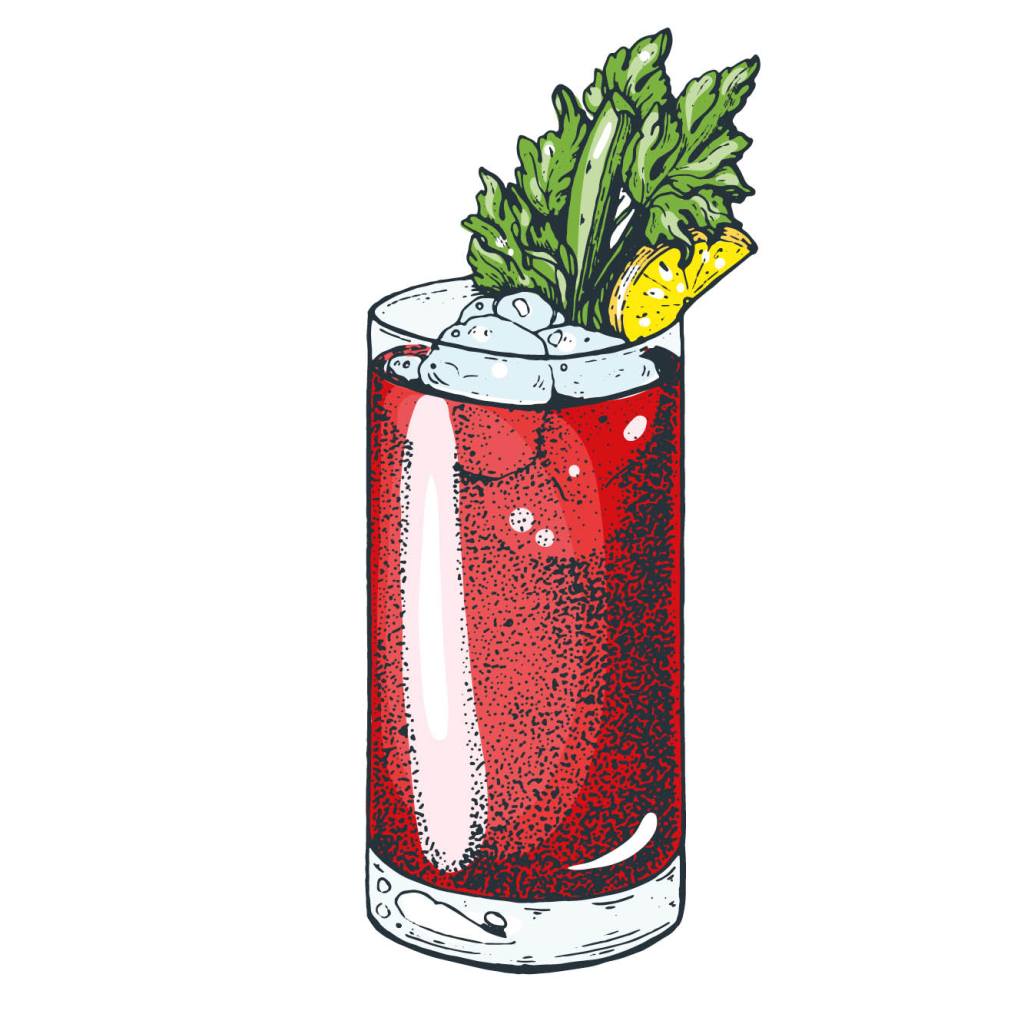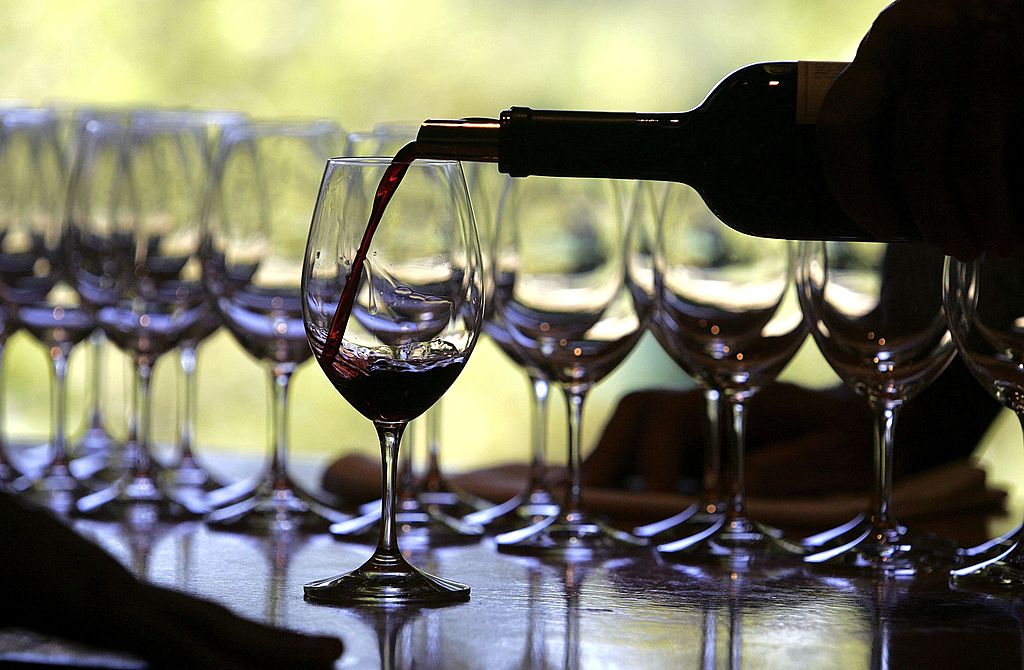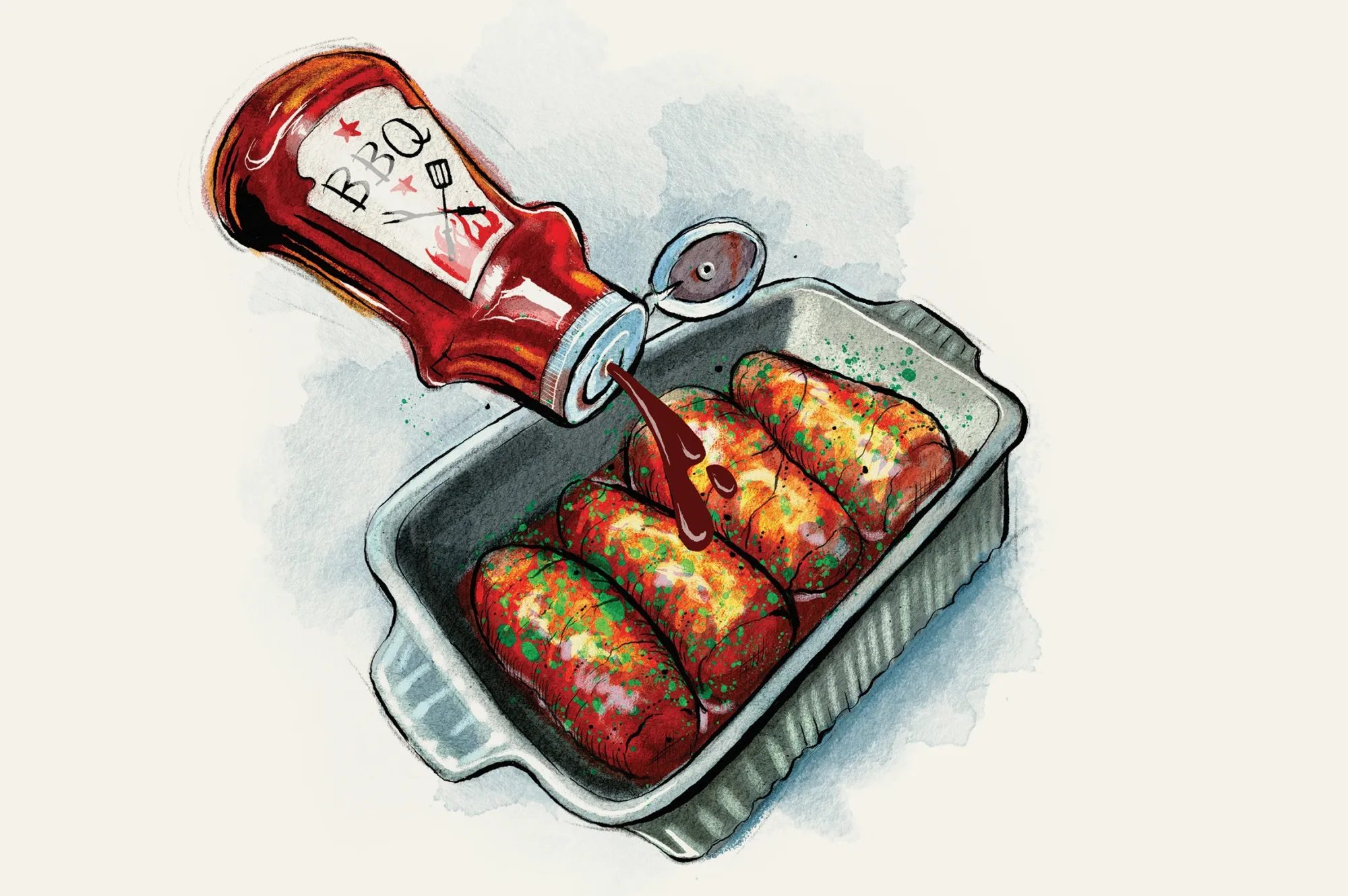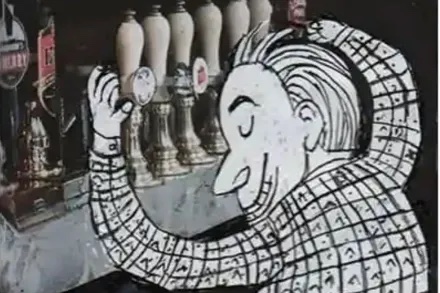Regular readers of my cocktail column probably get the formula by now: I give a short history of the drink in question, probably with an anecdote about my time in bartending, then provide a classic recipe, following by various flavor and format variations. But the Bloody Mary doesn’t fit neatly into that structure.
For one thing, the drink’s origin has never been firmly established — given that it started as a spiked tomato juice, how could there be? Do we really care who invented the vodka-cranberry? The Bloody Mary is the same way. It probably came around during the 1920s, gaining popularity in the 1930s. By 1939, you see the first real mentions of it in print. But at that point, a “Bloody Mary” was credited as consisting of “half tomato juice” and “half vodka,” and a drink containing most of the other modern ingredients was known as the “Mary Rose.”
Secondly, the Bloody Mary’s not really a cocktail. Though there’s no hard definition, the consensus is that a cocktail should have at least two types of alcohol — and the Bloody Mary certainly tastes closer to a spiked juice than a proper cocktail, like a Manhattan or a Sidecar. And more importantly, cocktails should be the cause of hangovers; the Bloody Mary is a Hair of the Dog drink. It’s the medicine for after a long night of drinking, not the fuel for it, and you’re far more likely to see it drunk at a leisurely ladies’ brunch than late at a great speakeasy.
But even though that is true — and even though it can’t be flavored and toyed with in the way proper cocktails can be — that doesn’t mean the Bloody Mary lacks the possibility of exploration and improvement.
To start with, the quality of its ingredients really matters. The classic recipe calls for vodka, tomato juice, Worcestershire sauce, Tabasco, horseradish, lemon juice, pepper and celery salt, and each of these should be treated carefully, though none more than the tomato juice.
If you want to do store-bought, go for a smooth, high-quality tomato juice made for Bloody Marys; for example, Big Tom, or a quality blend such as V8 or Clamato. The other way is to make your own — try plain San Marzano canned tomatoes, salt, a bit of water and a little parsley and garlic in a blender — and this is fantastic, but I can only ever be bothered when making large quantities.
If you are making your own tomato juice though, you can play around with additional flavors. Try adding roast peppers or white onion, and using green or golden tomatoes, or you can clarify it to make clear tomato water. Add Japanese La Tomato liqueur, vodka, a dash of vinegar, white pepper, salt, lime juice and a light-colored hot sauce, and you can serve it like a martini, with a clean mouthfeel, but a wonderful tomato flavor and scent.
There are Bloody Mary variants that swap out the tomato juice — the classic is the Bullshot, which uses beef consommé — but I would recommend trying this at a cocktail bar first, before attempting to make it on your own.
Once you have the tomato juice down, you can stick to the classic recipe, or tweak to your preference. Cocktail maven Simon Difford skips horseradish and adds 10ml of sherry and a 2:1 cane sugar syrup. An Asian Mary replaces the classic flavorings with fresh ginger, wasabi paste and soy sauce. The ratio of tomato juice to vodka is also a key one, with the consensus pick being 45ml of vodka to 67.5ml of tomato juice (roughly 2:3 ratio); however, an equal measure of tomato juice and vodka, double-strained, is a nice punchier version, and that’s what I do in my Bloody Marvelous.
You might use lime juice instead of lemon (always freshly squeezed!), freshly grated horseradish instead of prepared and plain kosher salt instead of celery salt. I’ve also had success playing with miso, MSG and a dash of fresh oyster sauce for more umami flavor, or in addition to a few drops of Tabasco, I’ll add another hot sauce (us ally Melinda’s Scotch Bonnet or Ghost Pepper sauces). If I’m using vodka, I always go for Chopin Rye, which can be infused if you like with black pepper, chilis, garlic, rosemary or some blend of those and other herbs. If you want a lighter drink, Quarter Proof’s Three Grain has the punch of a vodka at only 15 percent strength.
You can also just skip vodka entirely. The Red Snapper, favored in Blighty, uses gin; the Bloody Joseph uses scotch. The Bloody Maru has sake, while the Cubanita uses light rum; the Bloody Maria, my favorite of them all, stars tequila. If full tequila flavor is a little much for you, just use half vodka; or if you want more of it, go for mezcal instead (my choice is Ilegal Joven).
If you like Cubanitas, you can use darker rums for their rich, dark profile (I’d choose Havana 7). And if you like whisky and hate your stomach, you can make my Bloody Hell, using a split base of bourbon and Fireball, fresh chilis blended into the tomato juice, a lot of hot sauce and an Everclear float. Yeah, it’s nasty — but fun! In a whole other direction, there’s the Michelada. In Mexico, this encapsulates a range of spiced-beer cocktails, but the Michelada has globally become a beer-based Bloody Mary, using 1:1 beer to tomato juice and skipping the vodka, and it’s pretty great.
Floats are an underrated addition to Bloody Marys — you pour an additional drink down a barspoon, on top of the finished drink. Beer is a popular choice, either a light lager (my preferred is Noam), or a stout like Guinness, but I default to a deep red wine. A float of a tobacco liqueur like Jade Perique Liqueur de Tabac also works well.
Then, last and least, are the toppings. You might read about garnishing a Bloody Mary with blue-cheese-stuffed olives, roast peppers, mackerel, shrimp, feta cheese, avocado, fried chicken, slider burgers, roast corn, a full family meal from Five Guys or way too much bacon, and I beg you — beg you — not to do any of these. If you like the taste of your drink, and you like the taste of the food, just eat them separately.
With the right tweaks, and the right ingredients, the Bloody Mary can be an amazing drink, not just for a brunch, but for a great night too.
Recipe
Ross Anderson’s Bloody Marvelous
75ml tomato juice
50ml Chopin Rye vodka
25ml Ilegal Joven mezcal
1 tblsp Worcestershire sauce
1 tsp freshly grated horseradish
½ tsp pickle juice
½ tsp pickled jalapeño juice
4 dashes Tabasco
4 dashes Melinda’s Scotch Bonnet sauce
1 dried red chili, chopped finely
1 pinch salt
1 pinch finely ground black pepper 5-10ml lime juice
(As a float) 10ml of deep red wine or Noam lager
Add all (except the float) to a shaker over ice, then roll, gently chilling the ingredients. Double strain into a highball filled with ice, then gently float the beer or red wine on top. Garnish with a lime twist and a crack of black pepper.
This article was originally published in The Spectator’s February 2025 World edition.























Leave a Reply